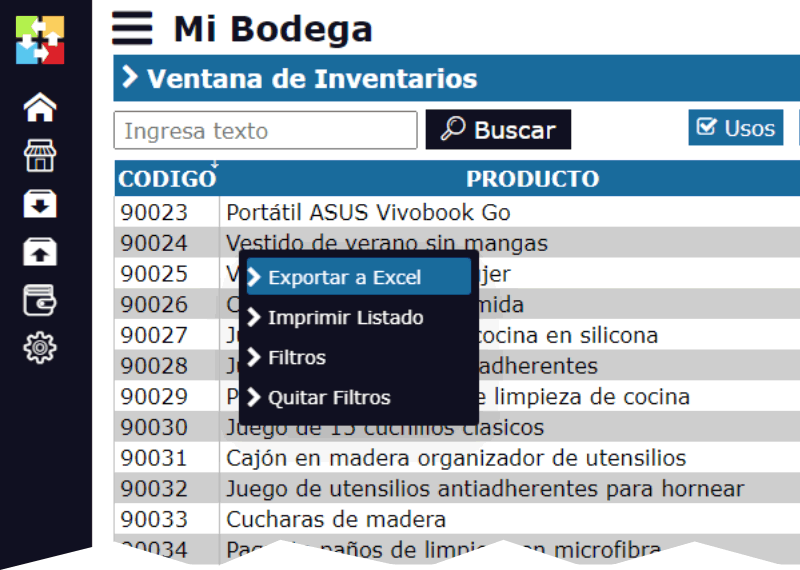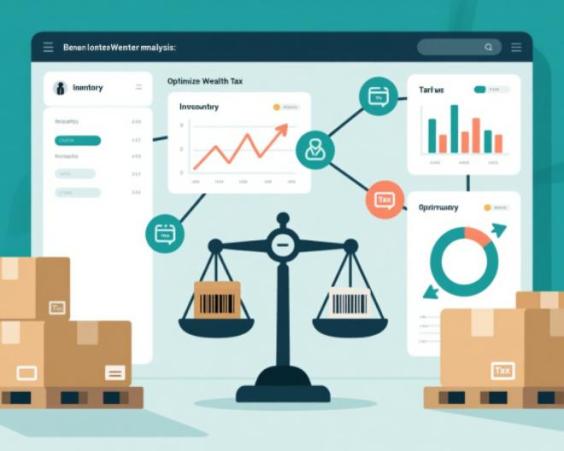Reverse Logistics: How to Manage Returns and Inventory Overstock
In inventory management, one of the biggest challenges is handling product returns and excess inventory. These aspects, if not managed properly, can generate significant losses and affect a business's profitability, especially in small businesses. Reverse logistics, which refers to the process of managing product returns and the redistribution or elimination of excess inventory, is a crucial tool for optimizing resources and improving operational efficiency. Here are key strategies for efficiently managing returns and excess inventory.

1. Establish Clear Return Policies The first step in managing returns is to have clear and transparent policies. Define the deadlines for making returns, the conditions under which returned products are accepted, and the procedures to follow. Communicate these policies effectively to your customers to avoid misunderstandings and ensure that returns are made in an orderly manner. By having a standardized process, you can reduce the time and costs associated with managing returns.
2. Implement a Return Tracking System To manage returns efficiently, it is essential to have a tracking system that allows you to monitor the status of each return in real-time. This system should include details such as the reason for the return, the condition of the product, the time elapsed since the request, and the actions taken. A tracking system not only improves internal organization but also provides valuable data to identify return patterns and make informed decisions.
3. Manage Excess Inventory Proactively Excess inventory can be a significant problem if not managed on time. To avoid products accumulating without purpose, it is essential to implement a proactive strategy. Regularly monitor inventory levels and make adjustments to purchase orders to avoid overbuying. Consider offering promotions or discounts to liquidate products that are not selling as quickly as expected. This will allow you to free up space in your warehouse and recover part of the invested capital.
4. Consider Donating or Recycling Non-Sellable Products In some cases, returned or excess products may not be suitable for resale. Instead of discarding them, consider donating them to charitable organizations or recyclers. This not only reduces the environmental impact of your business but also can offer tax benefits and improve your company's image. Make sure to keep a record of these movements to comply with local regulations and for possible audits.
5. Optimize Storage and Redistribution of Excess Inventory If you have excess products that still have commercial value, it is essential to optimize their storage and redistribution. Store these products in a designated area with easy access for quick redistribution. Additionally, if you operate in multiple locations, consider transferring excess inventory to stores or warehouses where demand is higher. This strategy not only reduces the risk of obsolescence but also can help improve sales in different markets.
6. Evaluate and Adjust Your Strategies Regularly Reverse logistics is a continuous process that requires regular evaluation and adjustments. Analyze return and excess inventory data to identify trends and areas for improvement. If you detect that certain products have high return rates or generate large excess inventory, review your purchasing, inventory, and sales strategy. Adapting to changing market needs and learning from experience is key to minimizing losses and optimizing profitability.
Reverse logistics is an essential component in inventory management that, if managed correctly, can reduce losses, improve profitability, and increase operational efficiency. By establishing clear policies, implementing tracking systems, proactively managing excess inventory, and regularly evaluating your strategies, you can turn returns and excess inventory from a problem into an opportunity to improve your business. Do not underestimate the value of well-managed reverse logistics; it can make a difference in the sustainability and success of your business in the long term.





